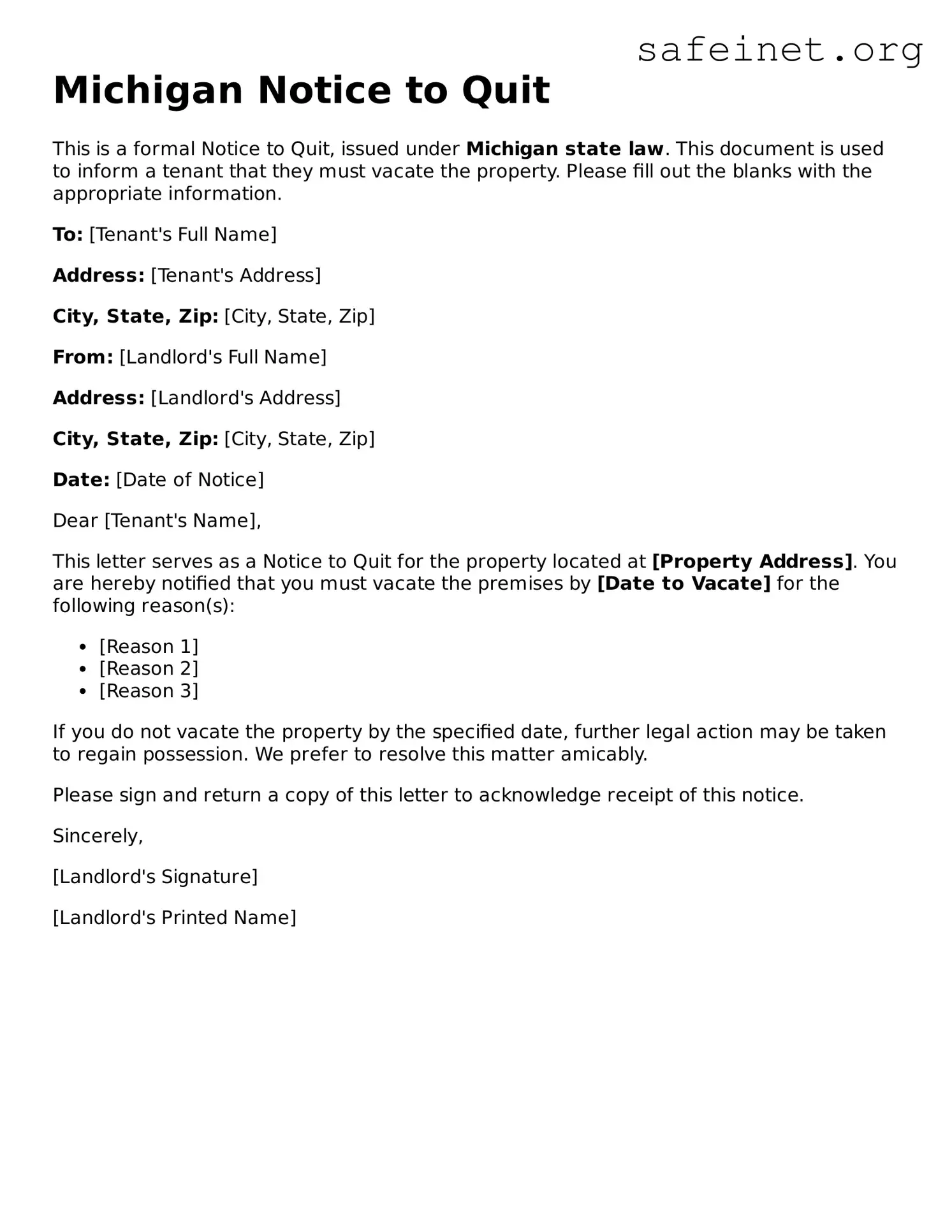Michigan Notice to Quit
This is a formal Notice to Quit, issued under Michigan state law. This document is used to inform a tenant that they must vacate the property. Please fill out the blanks with the appropriate information.
To: [Tenant's Full Name]
Address: [Tenant's Address]
City, State, Zip: [City, State, Zip]
From: [Landlord's Full Name]
Address: [Landlord's Address]
City, State, Zip: [City, State, Zip]
Date: [Date of Notice]
Dear [Tenant's Name],
This letter serves as a Notice to Quit for the property located at [Property Address]. You are hereby notified that you must vacate the premises by [Date to Vacate] for the following reason(s):
- [Reason 1]
- [Reason 2]
- [Reason 3]
If you do not vacate the property by the specified date, further legal action may be taken to regain possession. We prefer to resolve this matter amicably.
Please sign and return a copy of this letter to acknowledge receipt of this notice.
Sincerely,
[Landlord's Signature]
[Landlord's Printed Name]
